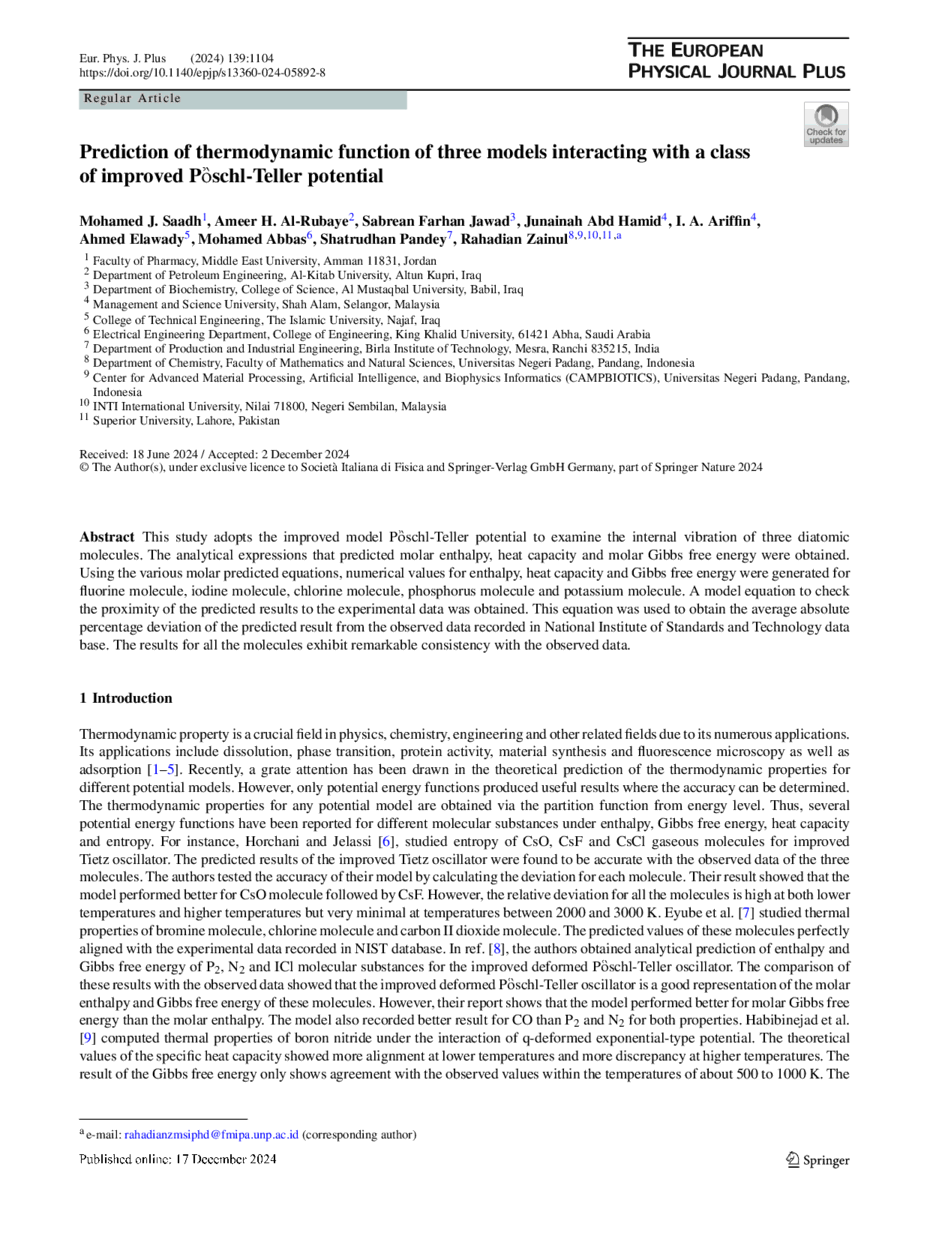https://doi.org/10.1140/epjp/s13360-024-05892-8
Regular Article
Prediction of thermodynamic function of three models interacting with a class of improved Pὂschl-Teller potential
1
Faculty of Pharmacy, Middle East University, 11831, Amman, Jordan
2
Department of Petroleum Engineering, Al-Kitab University, Altun Kupri, Iraq
3
Department of Biochemistry, College of Science, Al Mustaqbal University, Babil, Iraq
4
Management and Science University, Shah Alam, Selangor, Malaysia
5
College of Technical Engineering, The Islamic University, Najaf, Iraq
6
Electrical Engineering Department, College of Engineering, King Khalid University, 61421, Abha, Saudi Arabia
7
Department of Production and Industrial Engineering, Birla Institute of Technology, 835215, Mesra, Ranchi, India
8
Department of Chemistry, Faculty of Mathematics and Natural Sciences, Universitas Negeri Padang, Pandang, Indonesia
9
Center for Advanced Material Processing, Artificial Intelligence, and Biophysics Informatics (CAMPBIOTICS), Universitas Negeri Padang, Pandang, Indonesia
10
INTI International University, 71800, Nilai, Negeri Sembilan, Malaysia
11
Superior University, Lahore, Pakistan
a
rahadianzmsiphd@fmipa.unp.ac.id
Received:
18
June
2024
Accepted:
2
December
2024
Published online:
17
December
2024
This study adopts the improved model Pὂschl-Teller potential to examine the internal vibration of three diatomic molecules. The analytical expressions that predicted molar enthalpy, heat capacity and molar Gibbs free energy were obtained. Using the various molar predicted equations, numerical values for enthalpy, heat capacity and Gibbs free energy were generated for fluorine molecule, iodine molecule, chlorine molecule, phosphorus molecule and potassium molecule. A model equation to check the proximity of the predicted results to the experimental data was obtained. This equation was used to obtain the average absolute percentage deviation of the predicted result from the observed data recorded in National Institute of Standards and Technology data base. The results for all the molecules exhibit remarkable consistency with the observed data.
Copyright comment Springer Nature or its licensor (e.g. a society or other partner) holds exclusive rights to this article under a publishing agreement with the author(s) or other rightsholder(s); author self-archiving of the accepted manuscript version of this article is solely governed by the terms of such publishing agreement and applicable law.
© The Author(s), under exclusive licence to Società Italiana di Fisica and Springer-Verlag GmbH Germany, part of Springer Nature 2024
Springer Nature or its licensor (e.g. a society or other partner) holds exclusive rights to this article under a publishing agreement with the author(s) or other rightsholder(s); author self-archiving of the accepted manuscript version of this article is solely governed by the terms of such publishing agreement and applicable law.





